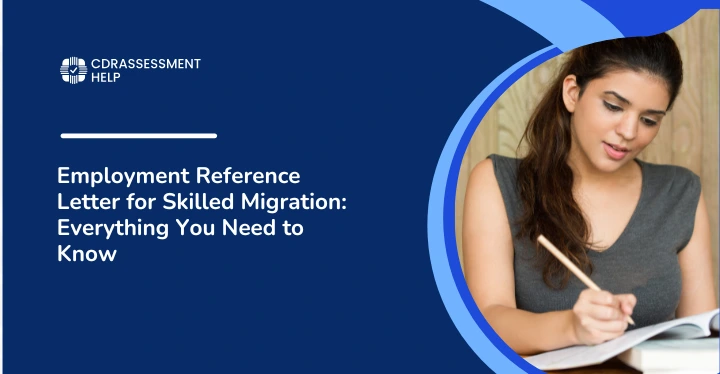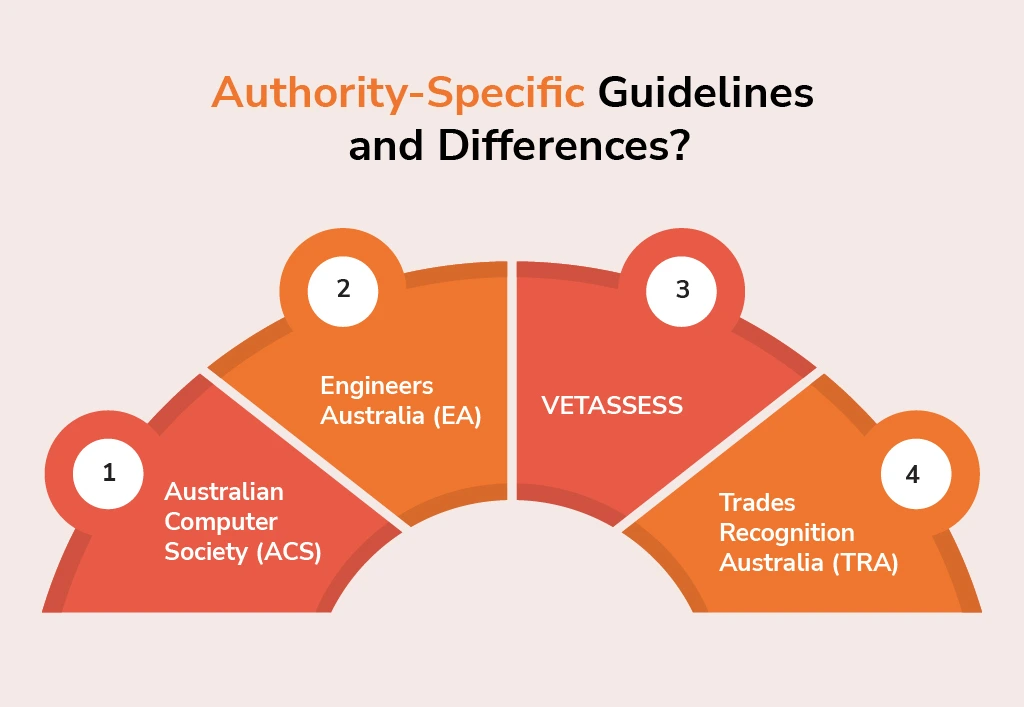Employment Reference Letter for Skilled Migration: Everything You Need to Know

Employment Reference Letter for Skilled Migration: Everything You Need to Know
The skilled migration pathway of Australia attracts international applicants at the highest level among all immigration programmes worldwide. Central to a successful skills assessment, an essential part of this process is the employment reference letter. The document demonstrates your professional work experience as an essential piece that proves your right to the programme. A reference letter that meets all the requirements will help you tremendously during your application, whether you use ACS or Engineers Australia.
This complete guideline covers all important aspects of skilled migration employment reference letters, including their structural elements and useful practices, along with typical errors to watch out for and examples you can refer to.
🔑 Key Highlights
- Proof of Skilled Work demonstrates that your work duties correspond to your declared position under an ANZSCO code.
- Migration Points Support assists applicants in getting points for their valid working experience in the GSM system.
- The formatting requirements differ according to the specific authority of ACS or Engineers Australia or VETASSESS, or TRA.
- EOI and Visa Backing help affirm points made in your Expression of Interest alongside the Visa approval process.
What is an Employment Reference Letter for Skilled Migration?
An employment reference letter functions as an important document for skilled migration.
Employment reference letters represent official documents that employers issue to validate a job position, along with responsibilities and work tenure information related to the candidate’s occupation. The assessing authorities verifying skilled migration applications reference this document to check employment credentials and compare job duties against the selected ANZSCO code.
Why is the Employment Reference Letter so Important?

Employment Reference Letter is so important for the following reasons:
1. Confirms Genuine Skilled Employment
The chief aim of employment reference letters is to demonstrate that you maintained genuine work in the same occupation you have nominated. The Department of Home Affairs and various skills assessing bodies must confirm that skilled migration applicants have engaged in actual workplace experience instead of only theoretical studies of their chosen field.
The reference letter specifies basic employment data that includes your job position, along with the length of service and description of responsibilities and the status of part-time or full-time commitment. The document serves as proof before the law that demonstrates your professional experience relates directly to the ANZSCO code you want to apply under.
2. Determines Points for Skilled Employment
The Australian General Skilled Migration (GSM) programme applies work experience as an essential factor to determine points in its point-based selection process. Immigration points follow a system that awards more points for increasing periods of skilled employment, starting from zero up to maximum levels.
Duration determines the points received from work experience, where three to five years yield 5 points, but eight or more years result in 15 points. Both the assessing body and the Department of Home Affairs use employment reference letters to verify and determine the correct number of points available to you. Missing proper organisation in your reference letter can lead to denied points for your qualifications, even if your experience remains valid.
3. Supports Your Expression of Interest (EOI)
You must provide all your work history details and qualification credentials and points calculation through self-assessment within your Expression of Interest (EOI) on SkillSelect. This representation phase serves only as the initial assessment since authorities verify none of the EOI information during this period.
You need to show proof through supporting documentation of every statement you made in your EOI following receipt of an ITA visa invitation. A reference letter from employment becomes critical at this stage.
Your employment reference letter enables you to support your job-related points while demonstrating evidence of the claims you presented. A letter lacking essential information or being unclear will result in a point reduction from the panel or potentially lead to visa denial.
4. Required for Skills Assessments
Every skilled occupation in Australia needs its specific assessment body to confirm that your qualifications and work experience match Australian criteria. Employment reference letters form an essential part of visa applications for these official authorities, including ACS, Engineers Australia, VETASSESS, and CPA Australia.
The assessing authority evaluates your letter to make sure your work duties match your selected occupation and your experiences fit the standards for a favourable skills assessment.
A poorly composed employment reference letter, along with missing information, may result in unfavourable results or cause authorities to omit specific work periods from your total experience. Every registration application requires different assessment requirements, thus needing specific customisation of the letters.
Authority Specific Guidelines and Differences?

The most vital aspect of writing an employment reference letter pertains to the fact that assessment bodies maintain separate requirements. Each evaluating body follows its method that depends on both the occupation type as well as the depth of information that they need. This document provides specific details about reference letter evaluation methods that Australian assessing bodies utilise during skilled migration assessment processes.
1. Australian Computer Society (ACS)
The Australian Computer Society exists to judge candidates for information and communication technology (ICT) positions. Job duties must match precisely with the ANZSCO code according to ACS standards.
The reference document needs to feature both your technical duties and exact technology systems alongside the workflow methods you handled during employment. Your statement about working with databases requires additional information, which should explain that you designed and optimised SQL-based relational databases using Postgresql and Oracle.
Your application can include a statutory declaration as unofficial documentation when you cannot obtain official letters, such as from a company that has discontinued business operations, or when you operated as a self-employed professional. Supporting evidence, such as client contracts, tax records, invoices, and bank statements, must accompany unofficial documentation to be valid.
2. Engineers Australia (EA)
Engineers Australia (EA) serves engineers from each discipline, like civil, mechanical, electrical, and software engineering fields, as the major assessing organisation. The employment reference letter serves EA in combination with other documents, especially the Competency Demonstration Report (CDR) and its two components, Career Episodes and Continuing Professional Development.
EA demands solid evidence showing your engineering capabilities in problem-solving and design work, together with your leadership skills and ability to work in teams. These abilities differ from the task-oriented requirements of ACS. Your engineering application requires specific evidence about project work you have completed, along with your authority to make decisions and your usage of theoretical concepts.
Project managers, along with team leads and senior engineers who supervised your work directly, should provide recommendation letters instead of HR staff, as they can best explain your active engineering system and tool involvement.
3. VETASSESS
VETASSESS functions as a multidisciplinary assessing authority that accepts references for marketing specialists and policy analysts, as well as chemists, hotel managers, and various other professional trade and technical occupations. The reference letter method, followed by VETASSESS, differs from other evaluation bodies.
The ANZSCO description, along with your duties, should match directly, and your letter needs to present full details about your responsibilities and assets used, as well as your decision-making capacity and handled processes.
VETASSESS requires supporting documents, including salary records, tax statements and signed work agreements, as well as your LinkedIn profile updates to prove your employment statements truthfully. Accurate and truthful details must be provided to these assessors because they specifically monitor false or unclear references.
4. Trades Recognition Australia (TRA)
Trades Recognition Australia (TRA) handles assessments for trade occupations such as electricians, plumbers, carpenters, chefs, and automotive mechanics. TRA concentrates on assessing practical skills, which exclude theoretical knowledge and academic subjects. The reference employment letter should offer more than a statement of job title and employment duration because it requires a detailed description of the work performed at your position.
The reference letter for an electrician should include a list of utilised tools (including multimeters and conduit benders), followed by descriptions of system-specific work (such as domestic wiring and commercial HVAC systems) and project types (buildings and factories), coupled with detailed descriptions of performed techniques (fault finding, safety testing and installation work).
Administration of letters must be conducted by direct observation of supervisors or employers who verified your skills while demonstrating your reliability, along with your independence at work.
Conclusion
The employment reference letter serves as an essential component that deserves careful attention because it plays an important role in your skilled migration application process. The correct development of this document enhances your skills assessment potential while simultaneously protecting your application from delays or documentation requests or rejections.
Your reference letter should be customised to fulfil the specific requirements of your assessing body, and you should ask for professional help from experienced migration consultants. This letter demonstrates that several career fields, including developer, civil engineering and marketing specialities, need adequately presented work records to build their skilled migration application.
FAQs
1. What information should be included in a letter of recommendation?
It should have company letterhead, full name, job title, employment dates, hours per week, detailed duties, tools used, and your supervisor’s name, title, signature, and date.
2. What is an employment reference letter?
The employment reference letter functions as a professional document for employers to validate working history, which supports Australian skilled migration objectives.
3. What should be the length of an employment reference letter?
The length of an employment reference letter should be 1 to 2 pages.
4. Why is an employment reference letter important for Australian immigration?
It proves your skilled work experience, supports your skills assessment, and helps you claim migration points, essential for a successful visa application.
